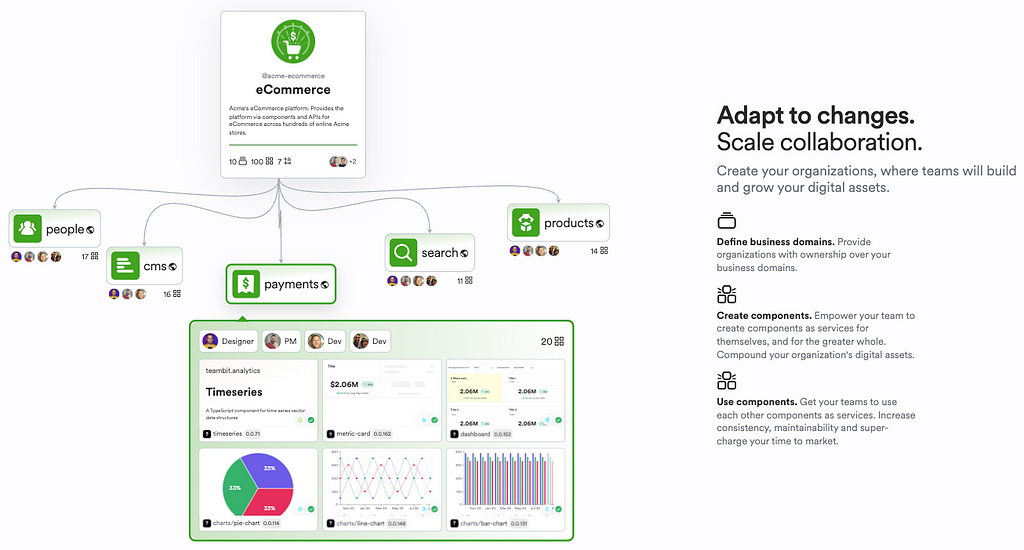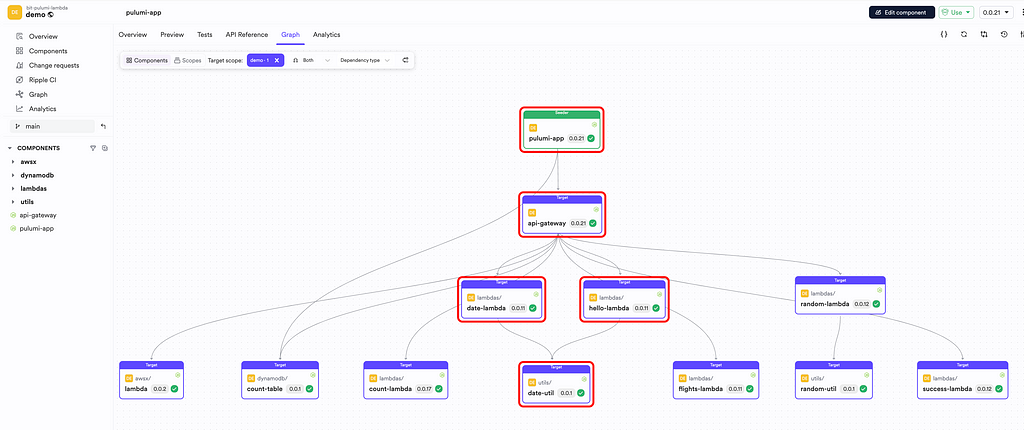This content originally appeared on Bits and Pieces – Medium and was authored by Ashan Fernando
Over the years different architecture styles have rewritten the nature of code reuse in software development

In software development, reusing code saves development time, reduces the chances of introducing bugs, and improves consistency across projects. However, the methods of code reuse vary greatly depending on the architecture style you’re working with.
Whether you’re dealing with monolithic, serverless, microservices, or event-driven architectures, each has its unique strategy for code reuse. These could change from reusing code within an application to across multiple projects.
This article explores how different architecture styles handle code reuse, the associated factors affecting code reuse, and the tools that can help streamline the process.
1. Monolithic Architecture
In monolithic applications, all the code is contained in a single, unified codebase. Therefore, it seems like the ideal environment for code reuse. Since everything is in one place, reusing a function or module should be straightforward, right? Not quite. While reuse is technically easier, the challenge lies in updating these shared dependencies.
In a monolithic structure, an update to a shared dependency may require the redeployment of all applications or modules that rely on that dependency. This makes dependency management and tracking difficult, especially at scale, where you must explicitly keep track of the dependency graph. Besides, it also forces developers to set up complex CI/CD pipelines that track the entire dependency graph, which can be impractical.
A simple solution is to version reusable code as packages or components, so dependents don’t always have to use the latest version after modifications are made to the reusable code.

To implement versioning for reusable code in monolithic architectures, you can break the reusable code into Bit components that track its dependency graph and manage the lifecycle using Ripple CI.
Note: These components can vary from frontend to backend modules, encouraging code reuse across different parts of the system.
2. Composable Architecture
In composable architectures, reuse is not just an option — it’s the foundation for building modular and flexible systems. The architecture revolves around creating loosely coupled, interchangeable, and reusable components that can be assembled in various combinations to meet specific application requirements.
Think of it like building with Lego blocks: each block is a component that can be assembled in multiple ways to create different structures, allowing for maximum flexibility.
Reuse in composable architecture isn’t just an option — it’s the very foundation of how systems are built.
Several key design principles, such as DRY (Don’t Repeat Yourself), KISS (Keep It Simple, Stupid), and YAGNI (You Aren’t Gonna Need It), shape the structure of composable architectures. DRY ensures that components are reusable and not duplicated across the system, while KISS promotes simplicity, making components easy to integrate and maintain. YAGNI encourages teams to avoid overengineering by only developing components when they are truly needed.
Bit is crucial in composable architectures, enabling teams to develop components that work as independent modules. This independence and the support from the Bit platform allow developers to create, test, and deploy components without relying on other parts of the system.
Components can be reused more effectively when they are developed as independent modules, allowing for greater flexibility and scalability.
In addition to developing independent modules, Bit helps manage dependencies, ensuring proper version control and preventing conflicts during updates. When a component doesn’t fully meet new requirements, teams can easily fork it to reuse its structure while modifying it to fit the new needs.
3. Microservices Architecture
Microservices are all about scale and autonomy. Each microservice is designed to operate independently, with its own business logic and release cycles. This autonomy allows the microservice team to release updates without waiting on other services, ensuring high productivity and faster development cycles. But what about reuse?
Microservices typically don’t favor reuse as it affects autonomy. Each service is owned by a different microservice team that needs to release any changes with full autonomy and high productivity.
However, microservices may reuse the platform code (or foundation code) across services as they are not changing often. This includes infrastructure utilities, authentication services, and logging frameworks, typically managed by a separate platform team.
These utilities can be packaged as libraries or components, allowing microservice teams to use them without depending on another team’s code.
4. Microfrontends Architecture
Microfrontends allow teams to independently develop and deploy different parts of the frontend while maintaining a unified user experience. A key challenge in this architecture is ensuring code reuse and UI consistency across different microfrontends, especially when shared elements like navigation, buttons, or themes are involved.
Microfrontends enable independent development, but consistent UI design requires careful management of reusable components, particularly in design systems.
To address this, design systems play a crucial role. A design system is a collection of reusable UI components, design tokens, and style guidelines that ensure uniformity across different microfrontends.

Reusing a design system helps maintain visual consistency, making the user experience seamless across various microfrontends, regardless of how independently they are developed.

Bit provides enables teams with the ability to develop independent components that can be reused across multiple microfrontends. It also increases collaboration, where developers can pull down the components that need modification and send a merge request in Bit.
4. Serverless Architecture
Serverless architecture brings a new level of modularity, where individual functions handle specific tasks in the cloud. The challenge, however, comes when scaling serverless projects, which often consist of hundreds of functions. Reusing code becomes critical, not just to maintain efficiency but also to avoid inconsistencies across those functions.
Reuse in serverless functions isn’t just about the code inside the functions — it’s about reusing hardened infrastructure to ensure security and governance across applications.
Managing code dependencies between serverless functions is crucial. Using Bit components to modularize and version shared logic makes it easier to redeploy only the functions affected by dependency changes.

This keeps serverless architectures efficient and secure while maintaining agility at scale.
In addition to code reuse across functions, a significant part of the cloud infrastructure supporting the serverless ecosystem may also tracked in code using an infrastructure as code (IaC) framework. This allows teams to programmatically define and deploy their cloud infrastructure while the hardened infrastructure configurations can be reused across applications, ensuring strict security and governance.
6. Event-Driven Architecture
Event-driven architectures allow services to communicate via events, fostering loose coupling between systems. In this architecture, reuse often comes in shared event handlers and common event schemas that enable multiple services to process the same types of events.
Event-driven systems excel when common event schemas and handlers are shared, ensuring that services can interact seamlessly without duplicating logic.
The challenge lies in ensuring these event schemas remain consistent across distributed services. If an event schema is modified, it may require updates across several services, complicating the dependency landscape.
Tools like Kafka or AWS EventBridge help centralize event handling, ensuring that reusable logic and schemas are managed consistently and scalable.
Conclusion
Code reuse is a key strategy for improving productivity, consistency, and security across various architectural styles. Each architecture style faces unique challenges, and the right tools and strategies can help teams overcome these hurdles.
While code reuse is essential for productivity and consistency, the right tools and strategies are key to making it practical and scalable.
By leveraging platforms like Bit to manage dependencies effectively and adopting reusable design systems, organizations can streamline their development processes, reduce technical debt, and enhance security and governance.
Code reuse is not just about efficiency — it’s about building sustainable, scalable architectures that evolve with your projects.
Thanks for reading. Cheers!!
Learn More
- Composable Software Architectures are Trending: Here's Why
- How to reuse React components across your projects
- Maximizing Code Reusability with Bit and Node.js
- The Dilemma of Code Reuse in Microservices
How “Code Reuse” Affects Different Architecture Styles was originally published in Bits and Pieces on Medium, where people are continuing the conversation by highlighting and responding to this story.
This content originally appeared on Bits and Pieces – Medium and was authored by Ashan Fernando